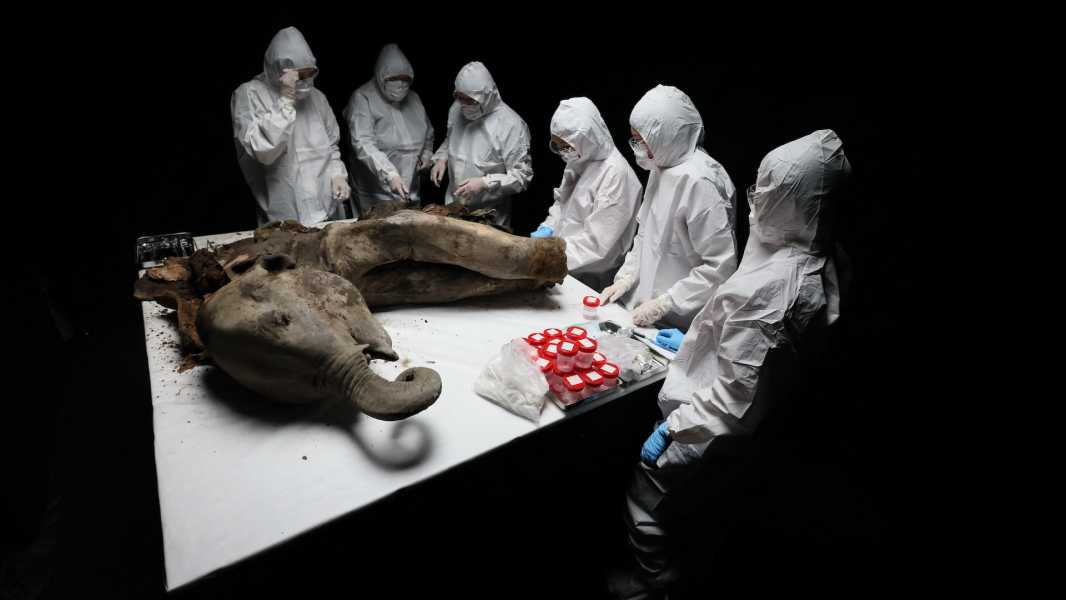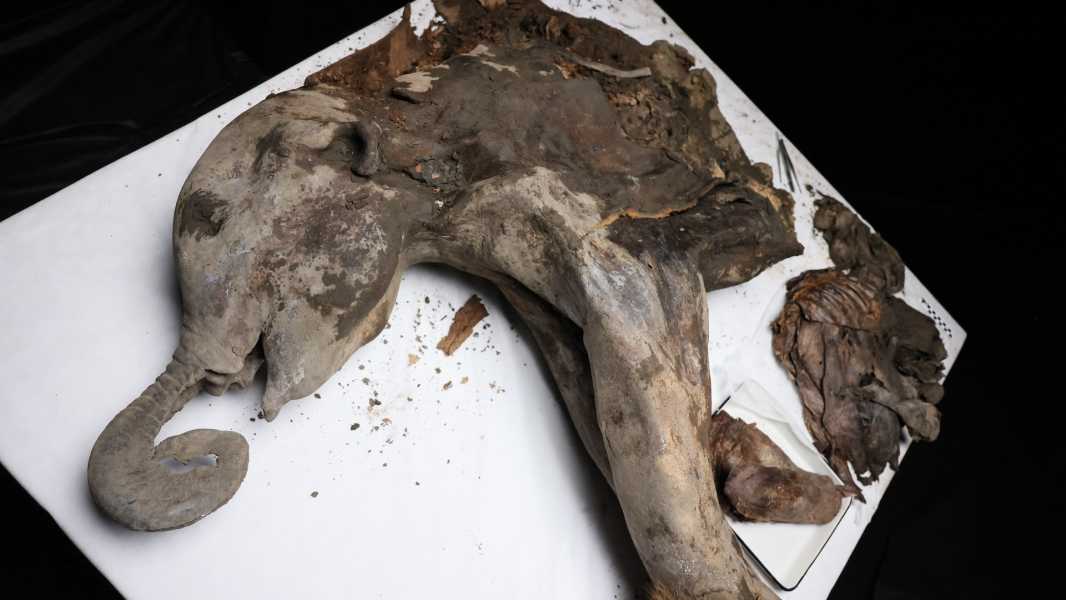
Scientists have performed an autopsy on a 50,000-year-old baby mammoth named “Yana.” (Photo credit: STRINGER via Getty Images)
Russian researchers have dissected and studied a 130,000-year-old baby mammoth that was preserved in the permafrost of Siberia.
The one-year-old baby mammoth, nicknamed “Yana,” was first shown to the public in December 2024. Scientists who discovered Yana claimed she was the best-preserved mammoth ever found, the Associated Press reported at the time. Yana's front half is almost completely intact and resembles a small elephant calf.
The researchers examined Yana more closely by performing a necropsy — the animal equivalent of a dissection. The procedure took several hours and was carried out in late March at the Mammoth Museum of the North-Eastern Federal University in Yakutsk, according to French news agency Agence France-Presse (AFP) via France 24.
“This autopsy is a chance to look into the past of our planet,” Artemy Goncharov, head of the laboratory of functional genomics and proteomics of microorganisms at the Institute of Experimental Medicine in Russia, told AFP.
Jana was trapped in permafrost, or permanently frozen ground, for thousands of years until climate change thawed the permafrost and exposed her body. The front half of her body began to slide down the rock but was kept in place by her hind legs, which remained embedded in the ground, AFP reported.
During the autopsy, the researchers spent several hours studying Yana's remains. According to AFP, the mammoth smelled like “a mixture of fermented earth and flesh.” Yana's body stood 3.9 feet (1.2 meters) at the shoulder and weighed nearly 400 pounds (180 kilograms). Her head and torso were intact, and the scientists were able to find her baby tusks. These tusks fall out as the mammoth grows, just like baby teeth in humans, AFP reports. The scientists were also able to identify Yana's internal organs.

Close-up of baby mammoth Yana.
“We see that many organs and tissues have been preserved in excellent condition,” Goncharov noted. “The digestive tract has been partially preserved, the stomach has been preserved. Fragments of the intestines, especially the colon, have also been found,” which gave scientists the opportunity to take samples of Yana's last meal.
Scientists hope to discover unique bacteria on Yana and analyze the plants and spores she ate during her life to learn more about her ancient environment and the relationships between ancient and modern microorganisms.
Researchers have not yet figured out why Yana died at such a young age, but they do know that modern people (H
Sourse: www.livescience.com





